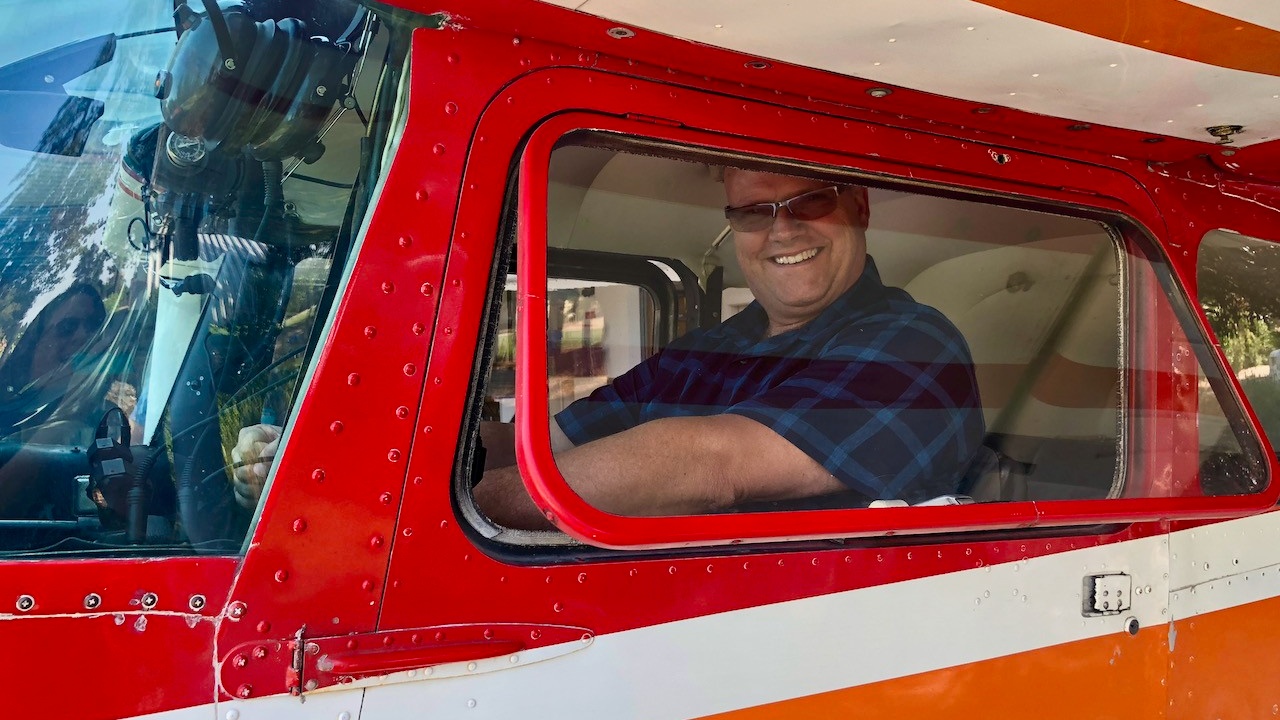The Benefits of a Counterintuitive Move
Nov 10, 2021
A few years ago, we were able to spend time visiting family near Sacramento, California. We were there, in part, to celebrate the eightieth birthday of Alan’s dad. It was fun to be together for such a milestone occasion.
Alan’s brother is an international pilot who owns a four-seat Cessna built in the 1950s. While we were together, we had the opportunity to take flight on three occasions. One morning we flew a quick 30 minutes to a town 110 miles away, just to have breakfast and walk around the quaint streets.
As we were taking off and heading back to their home, my brother-in-law made some comments about making a long circle around during takeoff and the benefits of that as opposed to a straight-up takeoff.
A metaphor for unhurried living came into focus for me as he described the dynamics. Once Alan and I were back home, I emailed and asked him to describe what he meant in more detail. Here is his lightly edited response:
When we took off, we decided to do it in an unhurried fashion. The town (elevation 3,419 feet) sits in a valley, surrounded by mountains up to 7,700 feet.
On takeoff, it would be possible to make a 90-degree right turn directly toward our destination, but we would have had to make a pretty steep climb. That steeper climb results in a slower airspeed, which means less airflow over the engine, which could cause an overheat. Also, the steeper climb angle makes it harder to see over the nose to avoid obstacles and other aircraft.
Finally, the lower airspeed leaves less margin for error in the event of wind shifts that could cause a loss of airspeed and eventually stall of the wing, resulting in a potential accident.
Conversely, by making a very slow 270-degree turn LEFT, we added five or ten minutes to our flight time, but it allowed for a higher airspeed, lower pitch angle, and more margin for error by the time we reached the mountains.
Although this maneuver took a bit more time, it provided a cooler engine (which means longer lifetime), better visibility, and better terrain clearance for more comfort for us on board.
I know there are a lot of flying details here, but are you with me? Let’s unpack some of the parallel metaphors that apply for our lives.
Heading directly toward our destination in the way that seems fastest and best may not always be the healthiest or safest maneuver. (Refer back to the paragraph describing the 90-degree right turn.)
We may not have an engine that can overheat, but we are all susceptible to burnout.
Our steep trajectory may make it harder to see obstacles. We may obscure our own view by taking what seems to us the most direct path.
By taking an alternate direction and path that add only a small amount of time, the issues of burnout and visibility are resolved. In the long run, our energy (engine life) is extended, and we can have better vision and an increased comfort level for our lives.
For some of you, it may feel like I’m stretching it here. But I believe we can pick up life lessons from almost any situation. There are dynamics all around us—natural, mechanical, seasonal, and even physiological—that can teach us how things work at peak performance.
More is not always better. Higher is not always better. Faster is not always better. Sometimes taking a bit more time and adjusting your speed and pitch, even slightly, can be just what you need to extend and enjoy this one wonderful and fulfilling life you’ve been given.
Reflection
- What unexpected or unhurried path is God inviting you to take?
- Think back on a situation in which you rushed and then paid for it in some way. How might you have handled that differently?
- How might God be leading you to take your own counterintuitive, 270-degree left turn?
- What other insights did you catch in the flight dynamics?


